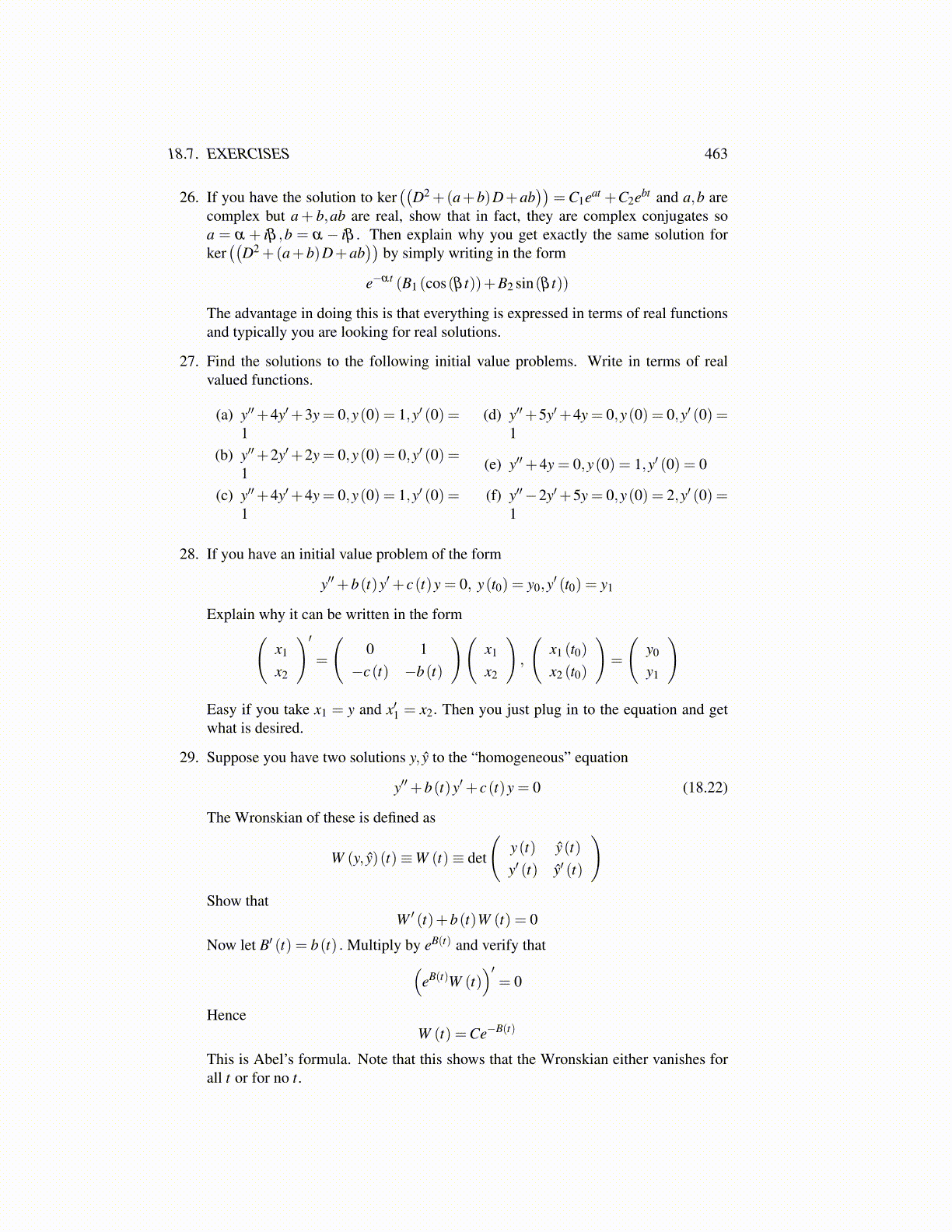
18.7. EXERCISES 463
26. If you have the solution to ker((
D2 +(a+b)D+ab))
= C1eat +C2ebt and a,b arecomplex but a+ b,ab are real, show that in fact, they are complex conjugates soa = α + iβ ,b = α − iβ . Then explain why you get exactly the same solution forker((
D2 +(a+b)D+ab))
by simply writing in the form
e−αt (B1 (cos(β t))+B2 sin(β t))
The advantage in doing this is that everything is expressed in terms of real functionsand typically you are looking for real solutions.
27. Find the solutions to the following initial value problems. Write in terms of realvalued functions.
(a) y′′+4y′+3y = 0,y(0) = 1,y′ (0) =1
(b) y′′+2y′+2y = 0,y(0) = 0,y′ (0) =1
(c) y′′+4y′+4y = 0,y(0) = 1,y′ (0) =1
(d) y′′+5y′+4y = 0,y(0) = 0,y′ (0) =1
(e) y′′+4y = 0,y(0) = 1,y′ (0) = 0
(f) y′′−2y′+5y = 0,y(0) = 2,y′ (0) =1
28. If you have an initial value problem of the form
y′′+b(t)y′+ c(t)y = 0, y(t0) = y0,y′ (t0) = y1
Explain why it can be written in the form(x1
x2
)′=
(0 1−c(t) −b(t)
)(x1
x2
),
(x1 (t0)x2 (t0)
)=
(y0
y1
)
Easy if you take x1 = y and x′1 = x2. Then you just plug in to the equation and getwhat is desired.
29. Suppose you have two solutions y, ŷ to the “homogeneous” equation
y′′+b(t)y′+ c(t)y = 0 (18.22)
The Wronskian of these is defined as
W (y, ŷ)(t)≡W (t)≡ det
(y(t) ŷ(t)y′ (t) ŷ′ (t)
)Show that
W ′ (t)+b(t)W (t) = 0
Now let B′ (t) = b(t) . Multiply by eB(t) and verify that(eB(t)W (t)
)′= 0
HenceW (t) =Ce−B(t)
This is Abel’s formula. Note that this shows that the Wronskian either vanishes forall t or for no t.